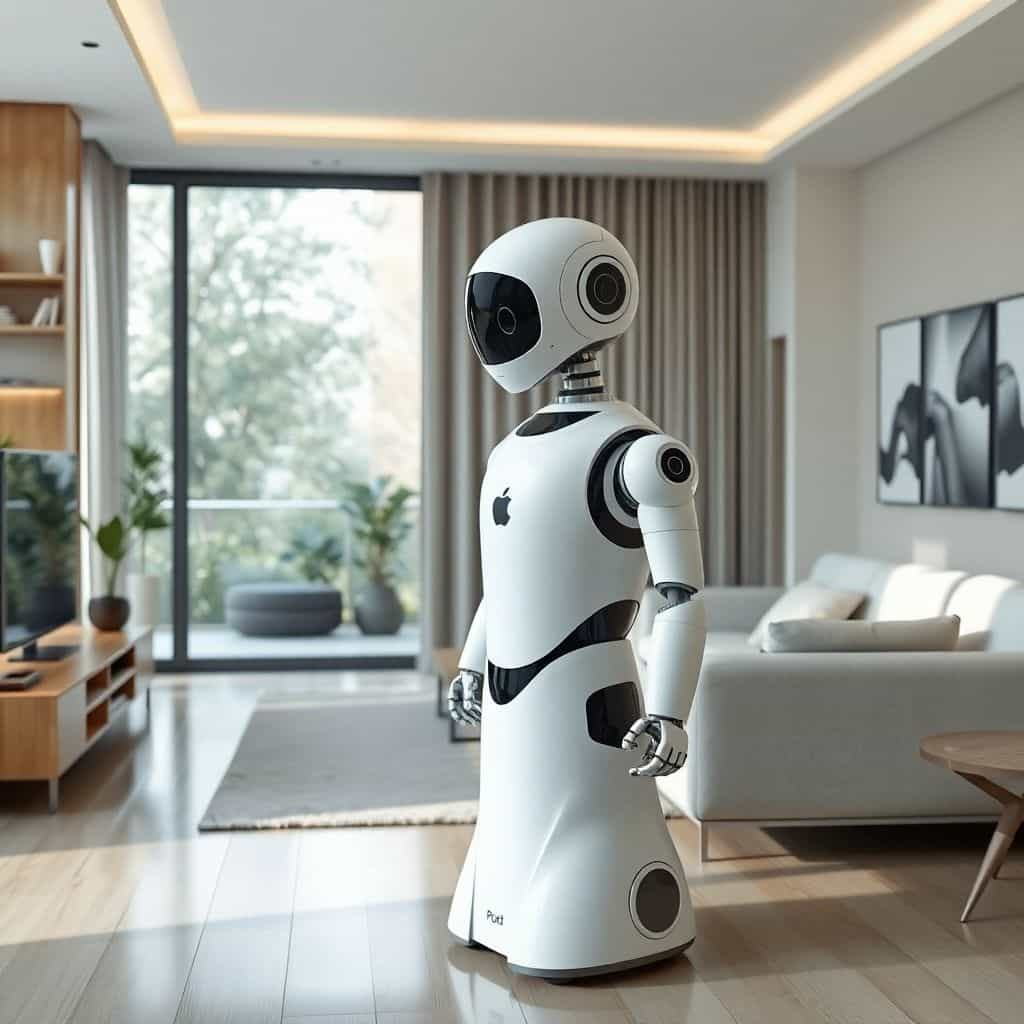In the ever-evolving world of technology, Apple has consistently set the standard for innovation, seamlessly blending style, function, and cutting-edge technology. Recent reports suggest that Apple is designing a domestic robot poised to redefine how we perceive and interact with robotics in our daily lives. While the project remains shrouded in secrecy, industry experts speculate on a myriad of features this device could offer, potentially impacting the global market significantly.
Historically, Apple has shown a remarkable talent for entering and subsequently dominating new industries. Their foray into the smartphone arena with the iPhone changed mobile technology forever, similar to how the iPad altered our perception of personal computing. If Apple follows their tried-and-true model, the domestic robot could become another flagship product, marrying the aesthetics and functionality consumers have come to expect.
One of the most anticipated aspects of Apple’s domestic robot is its potential for integration with existing Apple ecosystems. It’s presumed that the robot will seamlessly sync with products like the iPhone, Apple Watch, and HomePod, offering a cohesive user experience. Imagine a robot that can set reminders via your Calendar app, control your home’s temperature through HomeKit, and even suggest dinner options based on the contents of your refrigerator. Such integration would offer unparalleled convenience and control.
Rumors suggest that the robot will feature advanced AI capabilities, allowing it to learn and adapt to the habits of its users. This personalized approach could range from optimizing energy usage to curating personalized media suggestions. An industry insider mentions, ‘The ability of the device to learn the routines and preferences of its users could set a new bar for AI-driven home automation.’
Of course, with high expectations come significant challenges. Critics point out that such a sophisticated piece of technology may face issues typical to first-generation products. Compatibility with third-party devices, for instance, might be limited initially. Moreover, the complexity of ensuring robust privacy and security measures is paramount, particularly given Apple’s storied emphasis on user data protection.
In terms of design, Apple’s penchant for minimalism and elegance will likely carry over to the robot’s appearance, possibly featuring a sleek, unobtrusive physical form. Sources close to the development team suggest that user interaction could primarily be voice-activated, with supplementary control via devices like an iPhone or iPad. An intuitive interface could further simplify operation, making it accessible to a broad audience.
The cost of Apple’s new robot is a subject of intense speculation. Considering the cutting-edge technology and integration capabilities envisioned, a premium price point is expected. Estimates suggest an entry price of around $3,000, dependent on configuration and additional features. While this positions the robot as a luxury item, it remains competitive with other high-end robotic systems already on the market.
Apple’s entry into the domestic robotics arena could further pressure existing companies to innovate and reduce prices. Products like Amazon’s Astro and various Roomba models from iRobot currently lead the market. However, Apple’s reputation for fostering brand loyalty and delivering high-quality user experiences could shift consumer preferences significantly.
The introduction of such a robot also poses broader questions about employment and economic shifts. Automation in domestic settings could arguably reduce the need for certain manual labor jobs. However, as historical precedents suggest, such technological advances often spur growth in other sectors, such as tech support, sales, and education. Comments from economic analyst Laura Chen highlight an optimistic outlook, ‘While automation continues to evolve, it also creates new industries and opportunities we cannot entirely predict yet.’
Ultimately, as Apple navigates the intricacies of developing and marketing a domestic robot, the potential for shaping the future of home technology carries both excitement and debate. As with all innovations, time will tell whether this new venture achieves the same legendary status as Apple’s past products or joins the growing list of ambitious, albeit unrealized, technological promises. Until then, anticipation continues to build around what might become one of Apple’s most transformative products yet.
You may also like
Top 10 Deep Fryers
This article delves into the top ten oil fryers available in the market, discussing their technical features, pros and cons, alongside pricing and warranty details. Aimed at home cooks and culinary enthusiasts, it sheds light on both budget-friendly and high-end models, offering insights into what makes each option unique.
Robotic Lawn Mowers in 2025
In 2025, robotic lawn mowers have revolutionized the way we maintain our gardens. With advanced technologies, these smart devices promise the allure of a pristine lawn with minimal effort. This article delves into the technical characteristics, pros and cons, costs, and warranty details of various models available on the market.
The Gaming Desk Revolution: Ergonomics, Features and Market Trends
In 2025, gaming desks have evolved significantly, focusing on ergonomic designs and advanced features to enhance user comfort and performance. This article explores the technical characteristics, advantages, and drawbacks of various models, offering insights into price ranges and warranty options.
The Best Toasters of 2025
In 2025, the world of toasters is more advanced than ever before. This article reviews the top contenders, examining their technical features, benefits, and potential drawbacks. We also explore pricing and warranty options to help consumers make informed decisions.
